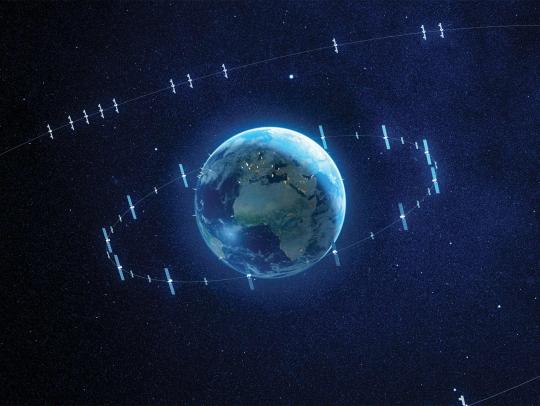SES 2025 Predictions: Multi-Orbit Satellites Will Drive Innovation for Enterprises, Governments and Telcos

- Author
- Nadine Allen
The article was first published on VMblog.

Enterprise and Cloud
Enterprises, governments and telecommunications providers are embracing the increased use of AI, analytics, Big Data, cloud-based applications, IoT, mobile applications and more to drive digital transformations that improve their organisation.
According to an IDC report in May 2024, spending on digital transformation is forecast to reach nearly $4 Trillion by 2027. And enterprises, governments and telcos can gain several benefits from going digital, including improved operational efficiency, greater customer satisfaction, enhanced collaboration and competitive advantage, accelerated innovation, and reduced costs.
And while digital transformation has many benefits, it also creates a greater need for high-performance network communications that connect office locations, customers, employees, partners and vendors all over the world. In addition, all of these groups need a reliable, high-capacity connection to the cloud, where so many applications reside and where so much data processing and critical business functions operate.
Organisations across many industries and regions will need to adjust to this rising demand, and they won't be able to do it with fiber-based, terrestrial networks alone. At the same time, new innovations are delivering software-defined and automated satellite networks on a global scale, making them an important new tool in an enterprise's communication strategy.
Satellites' increasing capacity can help firms adapt to the shifting dynamics and deliver seamless communications to remote areas on the ground, in the air, or at sea. This will move satellites from the role of backup network technology to a primary network provider that makes digital transformation possible.
Over the next 12 months, there will be some market shifts that will help elevate the satellite industry's position in the networking and communications landscape. Here are my three predictions for changes in the satellite industry in 2025.
1. The use of multi-orbit satellite solutions will increase, driving further technical innovation.
In 2025, the satellite industry will transform from isolated GEO, MEO and LEO services towards more integrated, multi-orbit space networks. Operators will secure multi-orbit capacity agreements while equipment manufacturers will continue developing advanced solutions to support multi-orbit networks, including electronically steered antennas, as well as cloud-based, intelligent automation systems that improve satellite orchestration and optimise network performance across a multi-orbit constellation. This new approach to satellites will benefit several segments, including maritime, aviation and governments, due to their need for uninterrupted and ubiquitous connectivity.
2. Global commercial satellite use increases to build sovereign networks.
The evolving geopolitical climate will cause increased demand for satellite-based sovereign networks. For example, the U.S., Luxembourg and other NATO countries plan to use high-performance satellite technology to build sovereign networks to support global missions, disaster recovery and other activities for NATO member government organisations, agencies and militaries. Satellites provide the security, performance and resilience to help these countries execute their missions and activities.
3. Transformation of the Ecosystem.
The satellite communication ecosystem is rapidly expanding as new players and innovative applications and services emerge, creating opportunities for additional businesses to grow. This shift introduces new customers and use cases, transforming the market dynamics. While traditional service providers adapt to intensified competition, the influx of applications like IoT, data relays, D2D, AI-integrated applications, and advanced connectivity broadens the industry's scope, fostering a more diverse and competitive landscape.
In conclusion, the satellite industry is poised for growth in 2025, with multi-orbit solutions, sovereign networks, and ecosystem expansion creating opportunities to work with new customers, reach new areas and deliver new use cases. Satellite advancements will not only enhance global connectivity and improve the speed and reliability of communications, but also position the technology as the critical infrastructure that enables digital transformation.
Satellite is ready to make a leap forward in the coming year to become a more prominent player in the technology industry, with the potential to positively impact a wide range of industries.
SES@MWC'25
SES will be present at next Mobile World Congress (MWC) from 3rd to 6th March and will be demonstrating some of these predictions including sovereign network and multiorbital capabilities.





